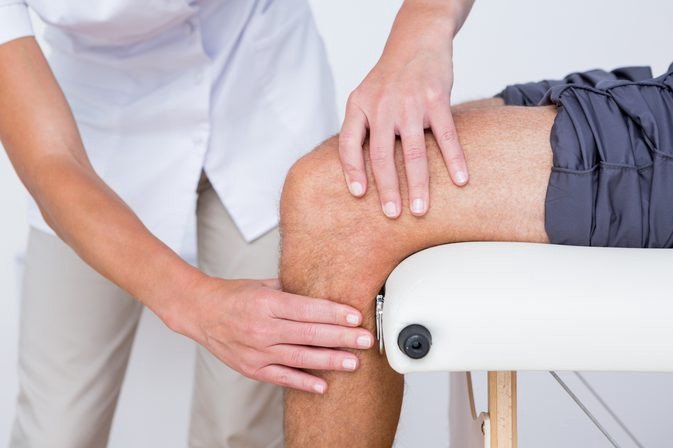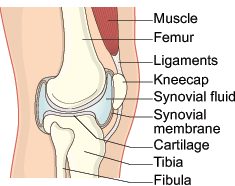Subtotal $0.00
Knee replacement surgery : Introduction
Knee replacement surgery is a method to replace a damaged or worn knee joint with an artificial joint. The medical term for this type of surgery is ‘arthroplasty’. Knee replacement surgery (arthroplasty) aims to relieve knee pain and improve movement. There are two types of knee surgery, depending on the condition of the knee:
- Total knee replacement: This may be necessary if the whole of the knee joint is damaged.
- Partial (Half) knee replacement: This is also known as ‘unicompartmental’ or ‘unicondylar’ knee replacement. This is carried out if only one part of the knee joint needs to be replaced.
Your NAV3 Computer navigated artificial knee replacement surgery in India will probably last for at least 20-25 years, depending on how active you are. As new technology continues to be developed, this figure is likely to increase. Knee replacement surgery (arthroplasty) is usually necessary when:
- Your mobility is severely reduced
- You experience pain even while resting
Pain and difficulty in moving the knee joint is commonly caused when the articular cartilage has been damaged or worn away. This means that the ends of the bones start to rub or grind together instead of smoothly sliding over each other. Replacing the damaged knee joint with an artificial one can help reduce pain and increase mobility.
Osteoarthritis: The most common reason for knee replacement surgery in India is osteoarthritis. Osteoarthritis in the knee occurs when the articular cartilage is damaged or worn away through natural wear and tear. The bones then have little or no protection to prevent them from rubbing against each other when the knee moves. The bones may then compensate by growing thicker and producing bony outgrowths to try and repair themselves, but this can actually cause more friction and pain.
Other medical conditions that may make a knee replacement necessary include:
- Rheumatoid arthritis,
- Haemophilia,
- Gout, and
- Damage to the knee joint because of old trauma
When should it be done Knee replacement ?
If you have already tried all the other non-surgical methods, and your pain is severe, even when resting, you need knee replacement surgery (arthroplasty). As any type of surgery carries a degree of risk, knee joint replacement surgery is only usually recommended when all other non-surgical methods have been unsuccessful.
Non-surgical methods for knee pain relief include:
- Losing weight,
- Physiotherapy to strengthen the muscles around the knee and reduce the strain on the joint,
- Using walking aids such as a cane or crutch, or
- Painkillers, anti-inflammatory medicines and steroid injections to reduce inflammation and pain.
Most people who undergo a knee replacement surgery in India tend to be aged between 60 and 80. Knee replacements are also likely to last longer in older and typically less active people. So all the non surgical alternatives are more likely to be recommended for younger patients. Best knee replacement surgeon in India is mostly try to recommended to young patients and patients who has minor issues with knee.
However, as the technology used in best knee replacements in India has improved, younger or more active people are now having better results from knee replacement surgery. Regardless of their age, anyone who has knee replacement surgery will still need to be fit and well enough to cope with a major operation, and the recovery and rehabilitation required afterwards.
During surgery, the damaged parts (worn out cartilage) of your knee joint will be removed and replaced by an artificial knee joint (prosthesis). The prosthesis is made up of metal or coated implants and special high grade plastic components.
An epidural is injected into your spine. This means you will not be asleep, but you will be less aware of what is going on and you will not be able to feel anything below your waist. The damaged ends of your thigh bone (femur) and shin bone (tibia) are very carefully cut away with the help of computer navigation and special power tools. The ends are precisely measured and shaped to fit the appropriate sized prosthetic replacement. A dummy joint is then positioned to test that the joint is working properly. The final adjustments are made, the bone ends are cleaned, and the final prosthesis is fitted. The surgery usually takes 45 minutes to one hour.
Complications of Knee replacement
All surgery carries a slight degree of risk. However, most people do not have any complications. Knee replacement surgery (arthroplasty) in India is now a routine and commonly performed operation. The goal of Total knee replacement is to relieve pain, improve the quality of life, and improve knee function. Evidence indicates that the risks of complications are reduced, and patient satisfaction with the outcome is increased, if the surgeon is familiar with the procedure.. and using advanced technologies like NAV3 computer navigation technique or Robot.
Your anesthetist and surgeon will be able to answer any questions you may have about your personal risks from anesthetics and the surgery itself.
Infection: There is a risk that you may develop an infection after your surgery. The incidence is very low (less than .01%) in our hands for last 15 years because of strict OT protocols and pre op optimization of the patient. We do all our surgeries in seamless operation theaters with laminar flow.
You may also need to take preventative antibiotics before dental work or other surgery following your knee replacement. This is to prevent an infection developing in your replaced knee from somewhere else in body. Speak to your doctor or specialist for advice.
Bleeding: If excess bleeding occurs during surgery, you may require a blood transfusion to replace the blood you have lost. This has become a rarity since I started using NAV3 computer navigation 12 years back.
Scarring: You will have a scar across the front of your knee where the incision was made. In some cases, you may also have numbness around the scar. This numbness sometimes may never go completely.
Blood clots (thromboses): These may form in the deep leg veins (deep vein thrombosis) as a result of reduced movement in the leg during the first few weeks after surgery. They can be prevented by using special support stockings, starting to walk or exercise soon after surgery, and by using anticoagulant medicines.
Recovery from Knee replacement
You will probably need to stay in hospital for 4 to 6 days, depending on how you progress in post op period, and what type of knee replacement you’ve had. Patients who’ve had half-knee replacement surgery (Partial knee replacement surgery in India) tend to have a shorter hospital stay. During your hospital stay you will see a physiotherapist who will teach you some exercises to help you recover quickly.
For few days you will be using a frame/walker or crutches to move around. These will be replaced with walking sticks after around a week. You will probably be advised to carry on using the walking stick until you have been re-assessed at your hospital follow-up appointment. This appointment is normally around six weeks after your surgery.
The wound left by your surgery (arthroplasty) will be kept covered until it is completed healed. Any staples or stitches in your wound will be removed 2 – 3 weeks after your surgery. Your physiotherapist will give you an exercise programme in hospital. These exercises are an important part of your recovery, so it is vital that you continue with them once you are at home.
We recommend taking short walks and carrying out normal household activities, such as walking up and down stairs. These exercises will help restore your movement and strengthen your muscles. Most people find it possible to resume normal leisure activities 3-6 weeks after their surgery. However, it may take up to three months for your swelling to settle down.
As soon as you can bend your knee enough to allow you to get in and out of a car, and control the car properly, you can resume driving. This is also usually around four to six weeks after your surgery, but you should check that you are safe to drive with your physiotherapist or doctor. Most people are also able to return to work at around this time, but it will depend on how physically demanding your job is.
You will need to continue with the exercises and follow the rehabilitation advice you are given to get the best from your knee replacement. Surgery alone will not guarantee improved movement and reduced pain.
How long will the replacement knee last?
Normal wear and tear through everyday use means that your replacement knee will not last forever. It is likely that your replacement knee will last at least 20 – 25 years. This may be achieved, and perhaps increased, by making sure you look after your new knee properly and taking care to avoid straining it. There may be some activities, such as running or high impact aerobics, that you will be advised to avoid.
Revision knee replacement surgery (replacing the replacement knee) is usually more complicated and a longer procedure than the original surgery (called primary knee replacement). Recovery may also be slower. Success may also vary depending on the reason for the revision. For example, most people tend to be more satisfied (in terms of pain and mobility) after revision surgery to correct loosening of the joint, than they are after revision surgery following infection of the joint.
While there is no set limit to the number of times you can have revision surgery, it is widely accepted that the artificial joint becomes less effective each time it is replaced. Research has shown that patients become less satisfied with their artificial knee, each time it is replaced. This is another reason why you should get your knee replaced with NAV3 computer navigation technique for long lasting results and quick recovery.
Diagram of the knee joint
SUMMARY
- Total knee replacement surgery in India is a commonly performed surgical procedure that can benefit certain patients who have tried other, non-surgical treatment methods (including using knee braces or shoe inserts, as well as medication) without success. The surgery involves replacing all three of the knee’s compartments with prosthetic (artificial) parts, with the goal of relieving pain and improving function.
- A candidate for total knee replacement will be evaluated by a team of doctors prior to surgery. This evaluation includes a review of the patient’s symptoms and medical history, a physical examination, x-rays and laboratory tests, and a thorough discussion of the risks and benefits of the procedure as well as any alternate options.
- Following surgery, the patient is given medications to prevent infection and control pain. Measures are also taken to prevent blood clots; these include taking blood-thinning medications and wearing compression devices and/or special support stockings on the legs.
- The patient will work with a physical therapist after surgery to develop a rehabilitation program to strengthen the knee and regain movement.
- Patients can usually resume their normal activities within three to six weeks following knee replacement surgery in India, and can participate in low-impact activities such as walking, cycling, and swimming after rehabilitation is completed.
- Complications following knee replacement surgery are uncommon, and can usually be prevented with careful post-operative management.




